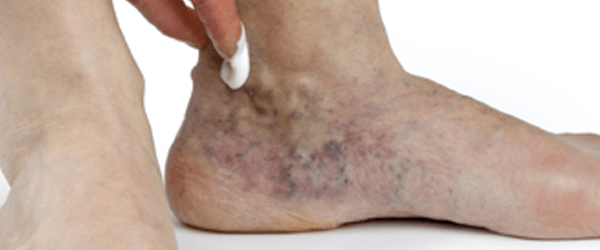
Spider veins take their name from their web-like appearance. For most sufferers, they represent a cosmetic concern, one that can lower self-confidence. What most patients who visit a vein clinic want to know is what causes spider veins and how to get rid of them.
Overview of Spider Veins
According to the Stony Brook School of Medicine, as many as 80 million adults suffer from vein disease. Many healthcare providers consider spider veins a type of varicose veins. Although these vessels are similar, they have some differences. Spider veins are smaller than varicose vessels. They also lie closer to the skin’s surface.
While varicose veins are typically purple, blue, or even flesh-colored and have a rope-like look, spider veins usually look blue or red and have a characteristic spider web-like appearance. These smaller vessels look flat and most often develop on the legs or the face. They are officially known as telangiectasias. While connected to the body’s vascular system, they do not form an essential portion of it.
Vein Doctors Explain Causes
The cause of spider veins is a structural problem in affected vessels. One-way valves become damaged or defective with age, allowing blood that should be transported to the heart to fall backward and pool behind the respective valve.
The accumulation of blood causes the vessel to stretch and expand. It eventually becomes a varicose vein. Vascular surgeons refer to the process of valve failure and blood accumulation as venous insufficiency, also called venous reflux.
UCLA Health indicates that risk factors for spider veins include:
- Family history
- Gaining weight
- Extended periods of standing or sitting
- Pregnancy
- Hormonal shifts, some connected to medication use
Spider Vein Treatment Options
Vein doctors use two primary types of treatment for patients with spider veins. Both are performed at a vein clinic, are noninvasive treatments, and have short recovery periods.
Sclerotherapy is a so-called “gold standard” of spider vein therapy. It is the most common treatment for spider and varicose veins, according to the Oregon Health & Science University. Using a fine needle, a vascular surgeon injects a chemical solution known as a sclerosing agent into the targeted vein. This causes the vessel to harden, close off, and eventually disappear after the body resorbs scar tissue.
Laser light treatments are effective for spider veins on the face. They have also been used recently to treat varicose veins. Laser energy causes the selected vein to close and eventually disappear.
Vascular surgeons generally reserve treatments such as the Venefit procedure, formerly known as the VNUS Closure, for larger and deeper vessels, typically varicose veins.
Unfortunately, no vein treatment can prevent the formation of new spider veins. Taking preventive steps like losing weight or wearing compression stockings could help. Some patients find it necessary to periodically return for treatment of new vessels.
